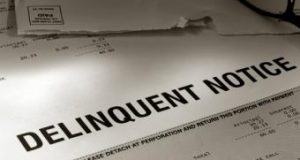
At the start of the year, just 3.5% of mortgage loans were in some stage of delinquency, according to the CoreLogic Loan Performance Insight Report released Tuesday. That’s down from 4.0% a year earlier, marking a 21-year low for the report.
Just 1.2% of loans were seriously delinquent—90 or more days past due—which is down slightly from 1.4% last year and the lowest level recorded since April 2000.
The percentage of loans in foreclosure was 0.4% in January, matching the rate from a year ago.
Early-stage delinquencies—those between 30 and 59 days past due—accounted for 1.7% of loans, which is down slightly from 1.9% a year earlier.
After noting that “home loan delinquency and foreclosure rates were the lowest in a generation before the COVID-19 pandemic hit,” Frank Nothaft, Chief Economist at CoreLogic, went on to say, “recession-induced job losses will fuel delinquencies.”
Recent CoreLogic research found that homeowners have an average of $177,000 in home equity. This equity and the forbearance programs available to homeowners will serve as a “buffer,” preventing “wide-spread foreclosures,” Nothaft said.
However, even with these buffers, Frank Martell, President and CEO of CoreLogic, expects “delinquency rates to jump significantly throughout the year as the economic toll from COVID-19 becomes more evident.”
He predicts regions with economies steeped in energy, transportation, and media and entertainment will fare the worst.
“The ultimate extent of the higher delinquencies will depend on how quickly the broader economy opens up again and employment levels rebound – both of these factors are uncertain at this time,” Martell said.
Meanwhile, Black Knight Financial Services said in its latest Mortgage Monitor Report that if unemployment reaches 15%, 3.5 million more mortgages could fall into delinquency if the relationship between unemployment and delinquency follows a similar pattern as the Great Recession.
Luckily, delinquency rates across the nation were low leading into the crisis. The state with the highest percentage of delinquent loans was Mississippi with a rate of 6.9%. The state with the lowest delinquency rate was Colorado with a rate of 1.5%
No state experienced an increase of serious delinquencies in January. The highest serious delinquency rates were recorded in Mississippi and New York, where 2.4% of loans were seriously delinquent in January. Louisiana trailed them with a 2.3% serious delinquency rate.
The list of top 10 states for serious delinquencies were rounded out by Maine, Maryland, New Jersey, Alabama, Arkansas, Connecticut, and Delaware, all of which had rates of 1.8% or 1.7%.
When comparing the 10 largest metros in the nation, CoreLogic found that Miami had the highest overall delinquency rate at 4.8%, while San Francisco ranked lowest at 1.1%.
In terms of serious delinquencies, 11 major metros experienced an increase, while 43 metros experienced no change in their serious delinquency rate.
At a national level, the share of loans that transitioned from current to 30 days past due was 0.8% in January. Meanwhile, 14.9% of loans that started out 30 days past due in January transitioned to 60 days past due, and 24.9% of those that were 60 days past due transitioned on to being 90 days past due or in serious delinquency status.

 DSNews The homepage of the servicing industry
DSNews The homepage of the servicing industry










